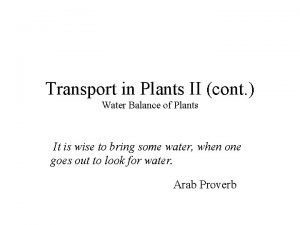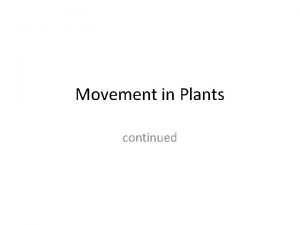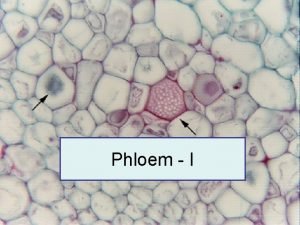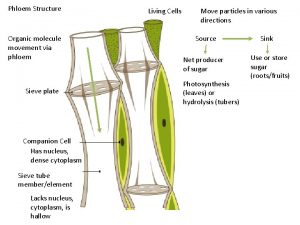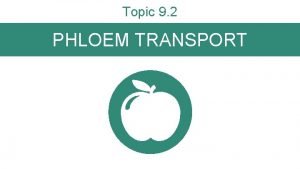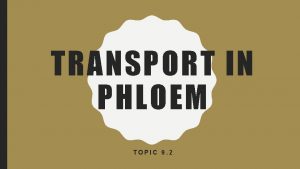Topic 9 2 Transport in the phloem of








- Slides: 8

Topic 9. 2 – Transport in the phloem of plants Essential Idea: Structure and function are correlated in the phloem of plants.

Skill: Identification of xylem and phloem in microscopic images of cell and root. Indicate the major vascular structures in the figures below.

Skill: Identification of xylem and phloem in microscopic images of cell and root. Stem Cross-Section Notice the difference between vascular tissue that is located in stems and roots. Root Cross-Section

Application: Structure – function relationship of phloem sieve tubes. The function of phloem is to carry sap throughout a plant. Phloem tissue has several key adaptations to effective sap movement throughout the plant. Sieve tubes have interconnected cytoplasm, which are connected by pores in the sieve plates. Companion cells are paired up with sieve tubes and serve to “load” the phloem with solutes (sugars) Sieve plates allow free movement of material from one phloem cell to another, even more so than plasmodesmata Plasmodesmata allow for transfer of materials between plant cells. Companion cells only have them with sieve tubes Plasmodesmata

Application: Structure – function relationship of phloem sieve tubes. Identify unique structures in the phloem, shown here in orange. What do you think the structurefunction relationship of the sieve plate is? How about the Companion cell? Here is a side view of a corn stem. Can you pick out the xylem and phloem from this image?

Plants transport organic compounds from sources to sinks. Source: Site of Production or storage Sink: Destination/site of use

Raised hydrostatic pressure causes the contents of the phloem to flow towards sinks. Skill: Analysis of data from experiments measuring phloem transport rates using aphid stylets and radioactively-labelled carbon dioxide. But how fast? And how do scientists know what is moving? Why do aphids insert their stylet into the phloem of a plant? Why not the xylem?

